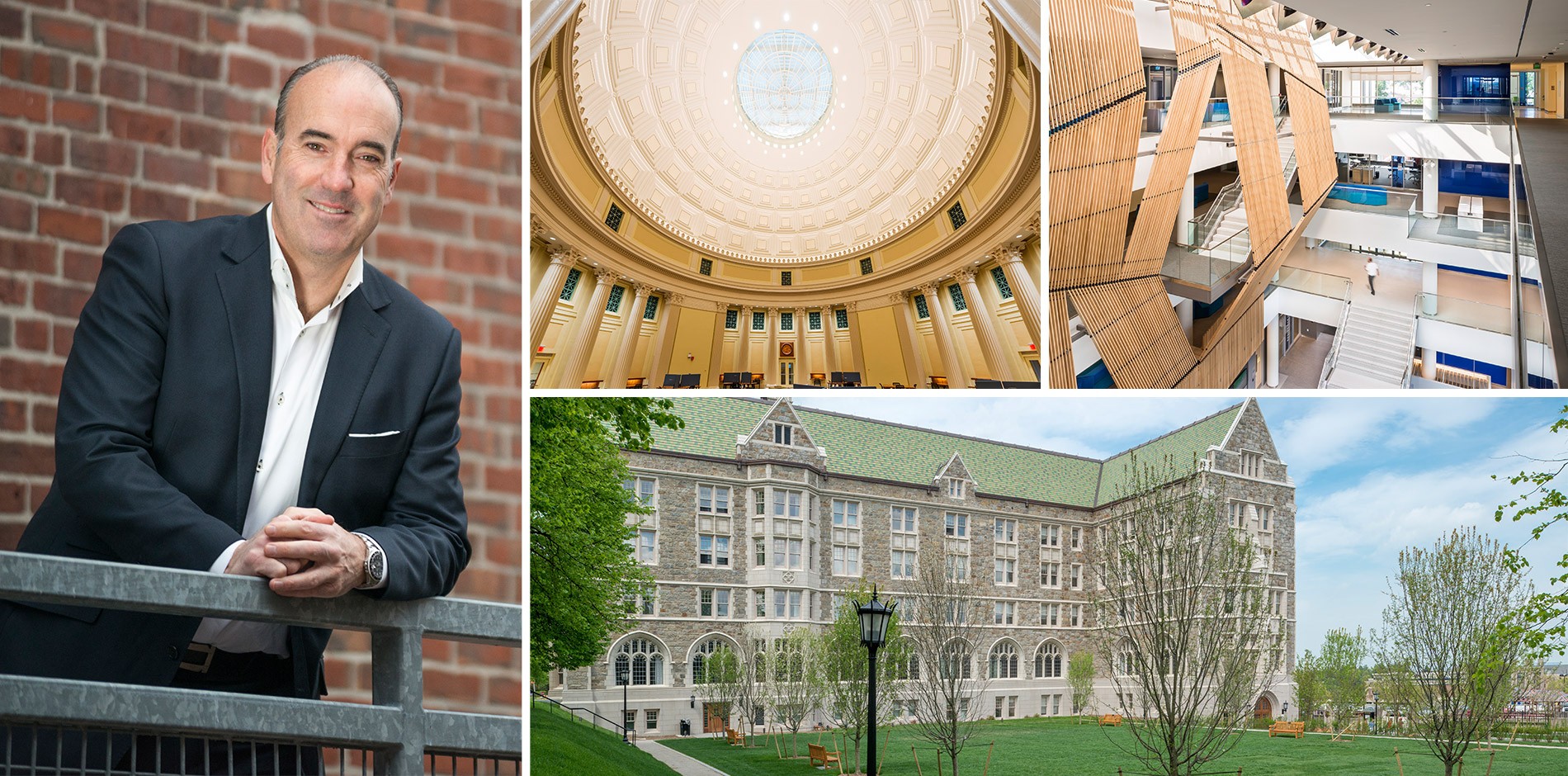Les Hiscoe took over July 1 as president of Boston-based Shawmut Design and Construction. Hiscoe succeeds Tom Goemaat, who announced his pending retirement in December. The $1.2 billion national construction management firm has carved out a niche doing work for academic institutions, with more than 40 current projects on college campuses, including Boston University’s Myles Standish Hall and Myles Annex on Beacon Street. Once it gets its foot in the door, Shawmut seeks to develop long-term relationships with institutions, Hiscoe said. That helps it weather ups and downs in the construction cycle, with a repeat client ratio of 80 percent and a 26 percent increase in annual revenues.
Q:Why are higher education projects such a big piece of Shawmut’s strategy?
A:We’ve had a successful run over the last 10 to 12 years. We opened the Providence office 14 years ago serving Brown University which grew into Johnson & Wales and Providence College. We started servicing Yale, Sacred Heart, Fairfield University and moved into New York with Columbia, NYU and St. John’s. There’s a natural continued progression down toward Philadelphia and the next push would be towards D.C. Those plans are nothing imminent but certainly a continuation of that strategy.
Our whole approach to higher ed is getting on a campus. We’re doing 46 higher ed projects on 19 campuses. Our goal is to get on a campus and be an absolute partner to that university or college, and be there for projects small or large. We come in with that client service mindset. If we can be that real partner with the client; we’re there for a long time.
Q:Is it possible to recession-proof a construction company?
A:We do think that way. We think over the last five years since the recession, we have changed the face of Shawmut. We’re more diversified in sectors. We’ve got health care, a national retail platform and national hospitality which has started to go into sports venues and hotels. We have eight offices and we’ve diversified in size (of projects). We now have a lot more larger projects than we’ve had historically. We did 540 projects last year. In the last few years we’ve gotten more into K-12 public work around Massachusetts.
Q:How are colleges’ and universities’ building requirements changing?
A:There’s certainly a need for beds, but they’re all trying to up their student experiences. We’re doing a lot of [recreation] center projects, residential projects and we’ve done several innovation centers. How do you create a better experience with more high-tech classrooms, better athletic facilities?
Q:You were involved in the opening of the Los Angeles office in 2013. Are you seeing a lot of growth on the West Coast?
A:West Coast right now is under 10 percent of our sales. We’re going to do $80 million or so out there right now. Historically, we’ve been traveling to the West Coast for our consumer-based clients. About half of the company is institutional-based, academic, health care and the other half of hospitality, retail, sports venues. We’ve been out there for a number of years in a traveling model. Our staff sat in the Northeast and traveled to California to work with our clients. The decision was to say we could provide a higher level of service having a local operation. The inspiration was we can deliver the better client service. It’s the same thing in Miami. The plan in California was to create a full-service Shawmut office. We’ve grown pretty rapidly. We’re up to 30 people there.
